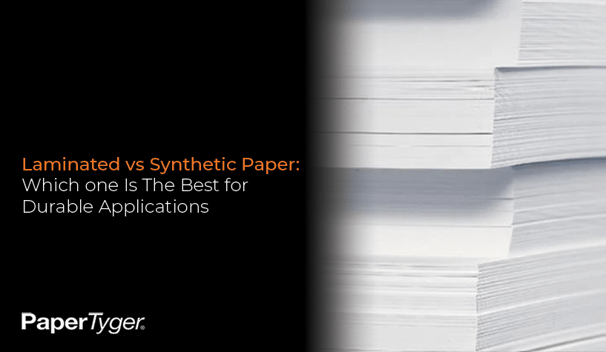Water resistant paper refers to paper products that are designed to withstand incidental or light...
Laminated vs Synthetic Paper: Which one Is The Best for Durable Applications

Printers and converters are turning to both laminated and synthetic paper for applications requiring durability. But what are the differences between the two materials? Which paper is best suited to your application?
There are distinct advantages to printing paper especially for printers/converters that use predominantly paper as their main raw material:
- “Synthetic Papers” are referred to as that because they are totally plastic. Essentially, they have taken the place of paper in various applications because the paper isn’t durable enough.
- Synthetics typically require special inks, settings, plates and have prolonged drying times.
- Synthetic materials, are generally waterproof.
- “Laminated paper”, or, “paper/film/paper” is also a preferred choice for applications requiring durability where the product is not exposed to the elements for prolonged periods of time. This means laminated paper products are water resistant, not waterproof. Despite this, laminated papers are as durable as synthetic because they are made with an inner layer of plastic film. Laminated paper however has significant advantages with its printing and converting ease. Unlike synthetic papers.
- There are no special inks or set-ups required and no prolonged drying times.
- Less waste and quicker drying times means all equal further cost savings.
- Furthermore, it allows for consistent and smooth printing surfaces, which result in exceptional graphics.
Another advantage of laminated paper is its stability. It is laminated using a patented solventless or 100% solids technology. This laminating method requires no ovens to cure or burn off solvents and does not use water-based adhesives. This means that laminated papers stay flat.
We hope you’ve found this information useful in determining which paper suits your application. Please contact PaperTyger for more information about its laminated materials. We’d be happy to help with your queries as to whether your application is suited.





